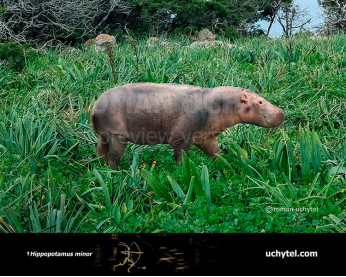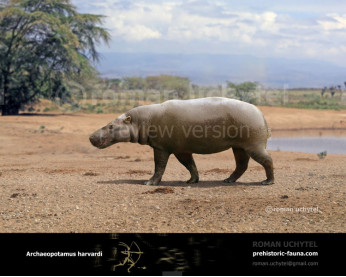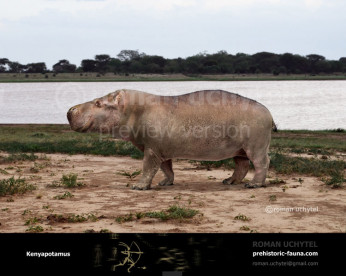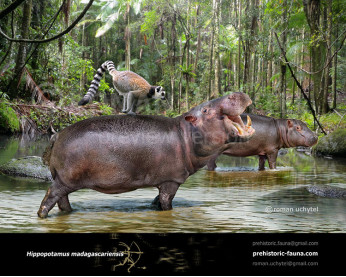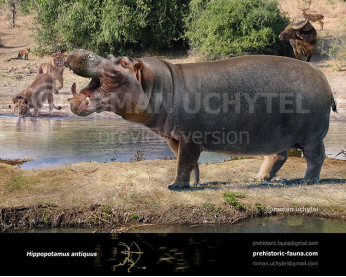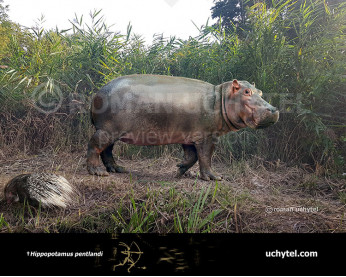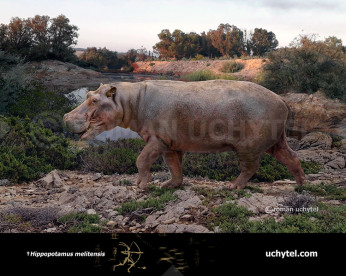Hexaprotodon
315315
Hexaprotodon (†Hexaprotodon sivalensis (Falconer & Cautley, 1836))
Order: Artiodactyla
Family: Hippopotamidae
Time period: during the Early Pleistocene-Late Pleistocene (Asia)
Size: 3 m in length, 110-140 cm in height, 400-700 kg of weight
Hexaprotodon is an extinct genus of hippopotamid known from Asia. The core Asian members of the genus most closely related to the type Hexaprotodon sivalensis were widespread throughout the Late Neogene and Quaternary of South and Southeast Asia, with the oldest records coming from the Late Miocene Siwalik Hills. This hyppo survived in India until the terminal Pleistocene, with the latest dates being around 16,467–15,660 cal years Before Present from bones found in the Narmada River valley in central India. They were mostly extinct by the Late Middle Pleistocene in Southeast Asia but survived in Sumatra into the early Late Pleistocene. The last known populations survived on the Indian Subcontinent to the very end of the Pleistocene.
The name Hexaprotodon was often applied to the pygmy hippopotamus before its reclassification into the genus Choeropsis. The genus including African taxa, has been suggested to be paraphyletic with respect to both species of living hippopotamus.
Оплата
У Вас є кілька зручних способів купівлі зображення: кредитна чи дебетова картка Visa, Mastercard, Maestro; PayPal або банківський переказ
Hexaprotodon (†Hexaprotodon sivalensis (Falconer & Cautley, 1836))
Order: Artiodactyla
Family: Hippopotamidae
Time period: during the Early Pleistocene-Late Pleistocene (Asia)
Size: 3 m in length, 110-140 cm in height, 400-700 kg of weight
Hexaprotodon is an extinct genus of hippopotamid known from Asia. The core Asian members of the genus most closely related to the type Hexaprotodon sivalensis were widespread throughout the Late Neogene and Quaternary of South and Southeast Asia, with the oldest records coming from the Late Miocene Siwalik Hills. This hyppo survived in India until the terminal Pleistocene, with the latest dates being around 16,467–15,660 cal years Before Present from bones found in the Narmada River valley in central India. They were mostly extinct by the Late Middle Pleistocene in Southeast Asia but survived in Sumatra into the early Late Pleistocene. The last known populations survived on the Indian Subcontinent to the very end of the Pleistocene.
The name Hexaprotodon was often applied to the pygmy hippopotamus before its reclassification into the genus Choeropsis. The genus including African taxa, has been suggested to be paraphyletic with respect to both species of living hippopotamus.

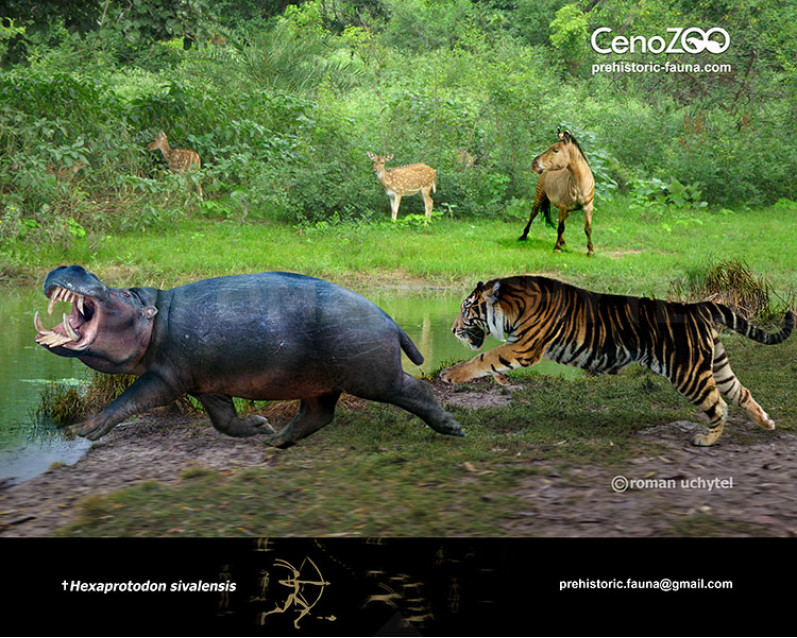
-797x638.jpg)

-70x56.jpg)
